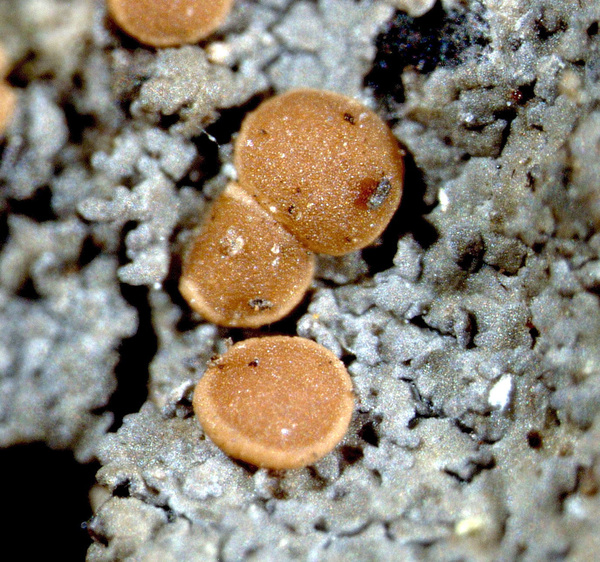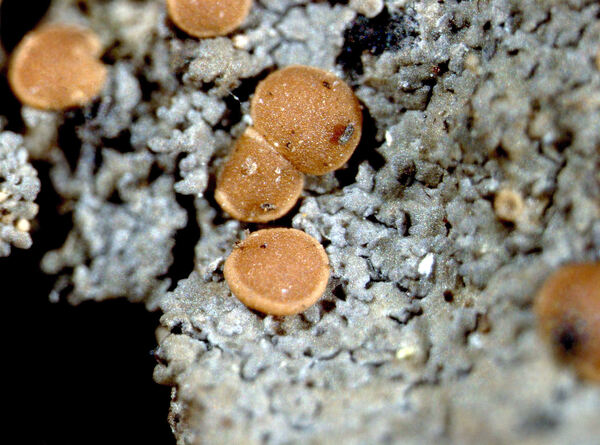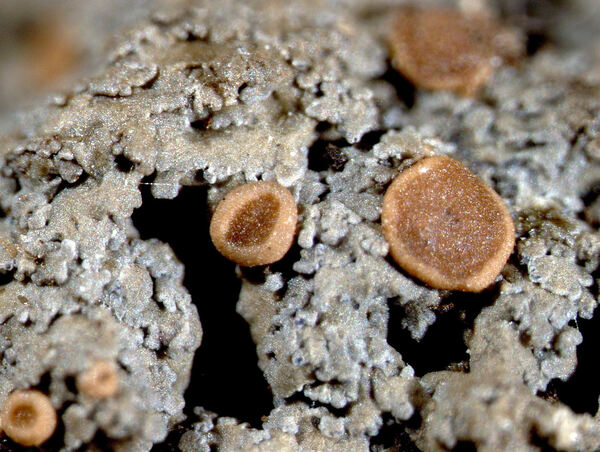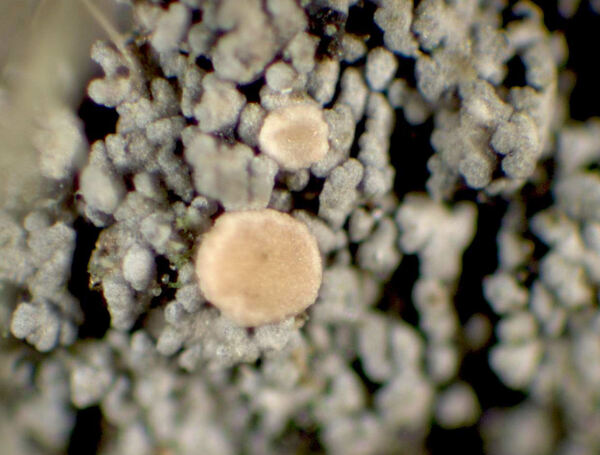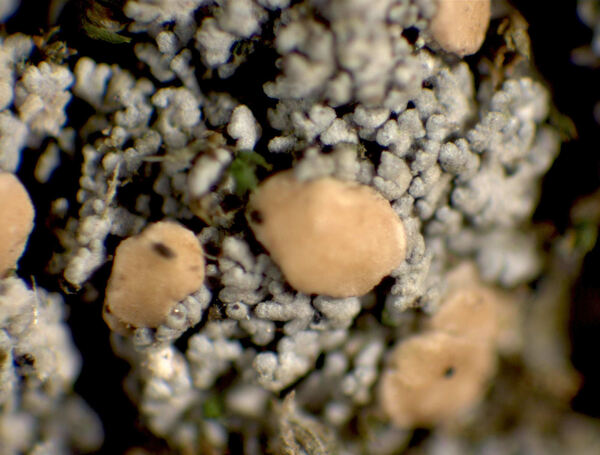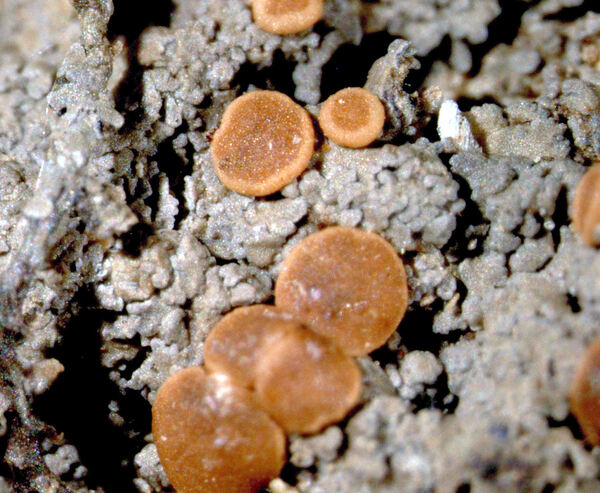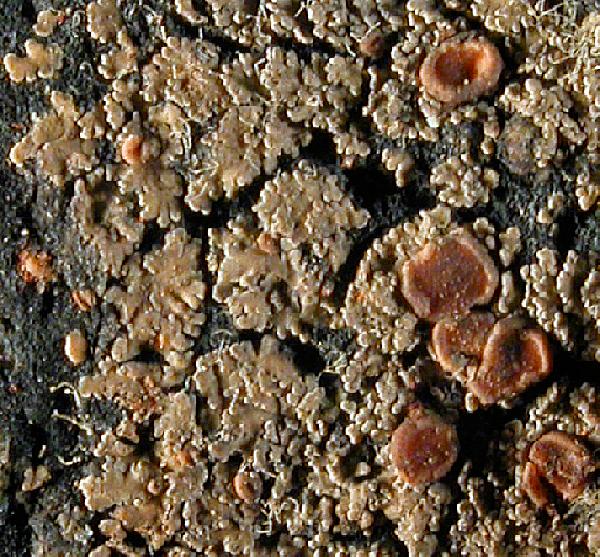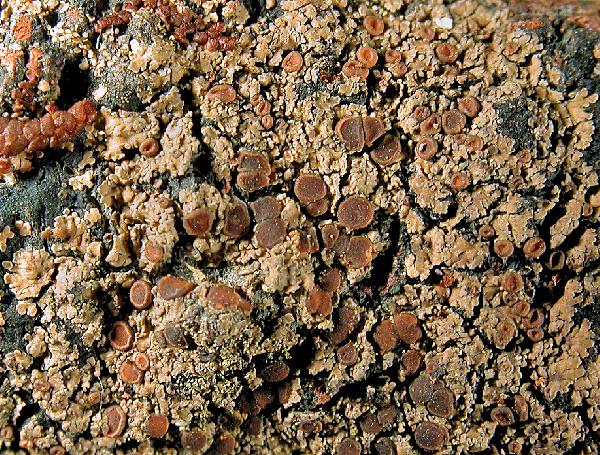Vahliella saubinetii (Mont.) P.M. Jørg.
Lichenologist, 40: 224, 2008. Basionym: Parmelia saubinetii Mont. - Ann. Sc. Nat. Bot., ser. 2, 6: 331, 1836.
Synonyms: Fuscopannaria saubinetii (Mont.) P.M. Jørg.; Massalongia rabenhorstiana Gyeln.; Pannaria saubinetii (Mont.) Nyl.; Parmeliella saubinetii (Mont.) Zahlbr.; Parmeliella saubinetii f. grisea Gyeln.; Trachyderma saubinetii (Mont.) Trevis.
Distribution: N - VG, Ven, Piem, Emil (Fariselli & al. 2020). C - Tosc. S - Camp (Brunialti & al. 2013, Ravera & Brunialti 2013, Ravera & al. 2015c).
Description: Thallus small-squamulose, heteromerous. Squamules bluish grey to grey-brown, without a white-felted margin, epruinose, (0.1-)0.2-0.3(-0.5) mm wide, with crenulated margins. Upper cortex paraplectenchymatous; medulla white, loose, gradually merging into rhizohyphae; lower cortex absent. Apothecia common, 0.3-1.2 mm across, sessile, with a flat to slightly convex, pale brown-orange to pink-brown disc, and a paler, persistent but sometimes very thin proper margin. Epithecium brownish; hymenium colourless to pale yellowish brown, I+ blue; paraphyses simple, c. 2 μm thick, the apical cells clavate; hypothecium colourless. Asci 8-spored, clavate to subcylindrical, with a thin densely amyloid layer capping the endoascus and an amyloid exoascus, but no other densely amyloid internal structures. Ascospores 1-celled, hyaline, ellipsoid with rounded ends, lacking an epispore, 12-17 x 4-6 μm. Photobiont cyanobacterial (Nostoc, the cells in clusters). Spot tests: thallus and medulla K-, C-, KC-, P-, UV-. Chemistry: without lichen substances. Note: a mild-temperate species found on trunks of mature deciduous trees in rather shaded and humid situations; extremely rare, but to be looked for in other parts of Tyrrhenian Italy. It is included in the Italian red list of epiphytic lichens as “Vulnerable” (Nascimbene & al. 2013c).
Growth form: Squamulose
Substrata: bark
Photobiont: cyanobacteria, filamentous (e.g. Nostoc, Scytonema)
Reproductive strategy: mainly sexual
Most common in areas with a humid-warm climate (e.g. most of Tyrrenian Italy)
Commonnes-rarity: (info)
Alpine belt: absent
Subalpine belt: absent
Oromediterranean belt: absent
Montane belt: absent
Submediterranean belt: extremely rare
Padanian area: absent
Humid submediterranean belt: extremely rare
Humid mediterranean belt: extremely rare
Dry mediterranean belt: absent

Predictive model
Herbarium samples
Growth form: Squamulose
Substrata: bark
Photobiont: cyanobacteria, filamentous (e.g. Nostoc, Scytonema)
Reproductive strategy: mainly sexual
Most common in areas with a humid-warm climate (e.g. most of Tyrrenian Italy)
Commonnes-rarity: (info)
Alpine belt: absent
Subalpine belt: absent
Oromediterranean belt: absent
Montane belt: absent
Submediterranean belt: extremely rare
Padanian area: absent
Humid submediterranean belt: extremely rare
Humid mediterranean belt: extremely rare
Dry mediterranean belt: absent

Predictive model
| Herbarium samples |
 Index Fungorum
Index Fungorum
 GBIF
GBIF
